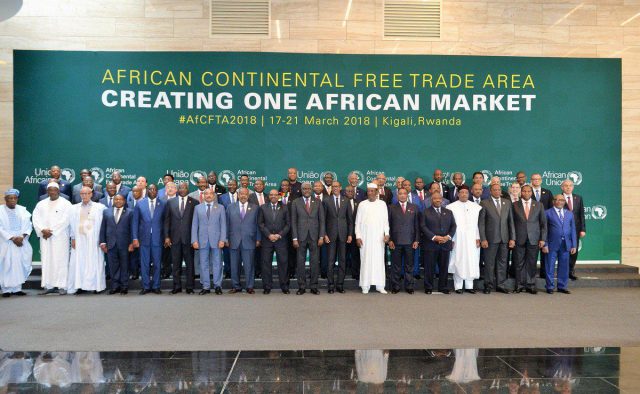
On 22 March, Ethiopia approved its membership in the Africa Continental Free Trade Area (AfCFTA) Agreement, joining the world’s largest free trade area that needed just one more ratification to become fully functional.
Gambia made it public its approved ratification of AfCFTA agreement making it the 22nd country to join the agreement cutting the minimum threshold set to spring it to action. The AfCFTA market has been born, a deepened economic integration of the African continent, just a step away ready for the launch of its operational phase.
“Good news! The Parliament of The Gambia has APPROVED ratification of #AfCFTA Agreement making us meet the minimum threshold. The AfCFTA market is being born and is one step ready for the launch of its operational phase in July this year,” tweeted the African Union Commissioner for Trade and Industry Albert Muchanga
1/2 – Good news! The Parliament of The Gambia has APPROVED ratification of #AfCFTA Agreement making us meet the minimum threshold. The AfCFTA market is being born and is one step ready for launch of its operational phase in July this year. @AUTradeIndustry @_AfricanUnion pic.twitter.com/it2CN1FWA4
— Amb. Albert Muchanga (@AmbMuchanga) April 2, 2019
The trade bloc a summation of 55 member states of the African Union the agreement, with a market population of over 1.2 billion people and a total gross domestic product (GDP) of more than $3.4 trillion will facilitate inter-regional trade, through trade policy, trade facilitation, productive capacity, trade-related infrastructure, trade finance, trade information, and factor market integration, are among others.
“This will definitely serve as a take-off point to enhance the free movement of people, good and services. By using this there is a lot of advantages that we can gain from the implementation of this agreement,” Gambia’s trade minister highlighted the trade benefits of the deeper regional integration
Estimations show that AfCFTA has the potential both to boost intra-African trade by 52.3 percent by eliminating import duties and to double this trade if non-tariff barriers are also reduced. There will be harmonization, facilitation, and coordination of trade liberalization across Africa, in general.
The agreement is also expected to enhance competitiveness at the industry and enterprise level through the exploitation of opportunities for scale production, continental market access and better reallocation of resources.


